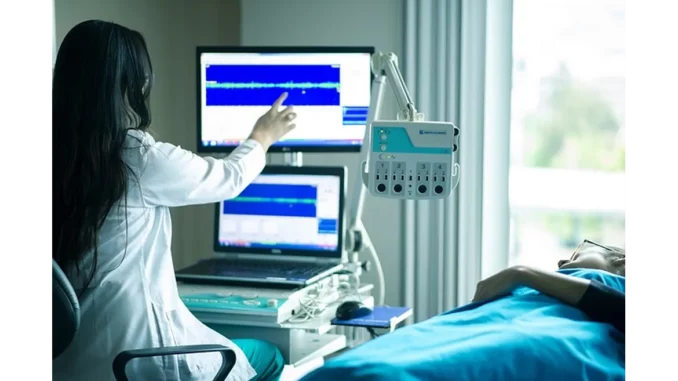
In a recent conversation with Dr. Emily Hartman, a veteran respiratory therapist with over 20 years of experience, I sought to uncover the factors propelling the rapid expansion of the medical oxygen concentrators market. Our dialogue provided a fascinating insight into a sector that is set to burgeon from USD 3.6 billion in 2023 to an impressive USD 6.5 billion by 2033.
Dr. Hartman began by reminiscing about her early career. “In those days,” she recounted, “oxygen therapy was largely confined to hospital settings, reliant on unwieldy cylinders unsuitable for home use.” Today, however, the landscape has undergone a remarkable transformation. The introduction of portable oxygen concentrators has revolutionised the field, especially for patients requiring long-term oxygen therapy. These devices have transitioned oxygen therapy from hospitals to homes, offering patients freedom and mobility previously unimaginable.
The burgeoning market can be attributed in part to the aging global population. Dr. Hartman pointed out that with the rise in chronic respiratory diseases such as COPD and emphysema, the demand for home-based oxygen therapy solutions is increasing steadily. She emphasised that this trend is driven not merely by convenience but by necessity. For older patients, particularly those with mobility challenges, the independence afforded by portable oxygen concentrators is invaluable.
Technological advancements have been instrumental in this evolution. Dr. Hartman described the latest models as being more efficient and user-friendly than ever before. “Modern concentrators are lighter, quieter, and more energy-efficient, crucial for daily use,” she remarked. The contrast is stark when considering that traditional machines could weigh over 31 pounds, while contemporary portable models weigh as little as 6 pounds, greatly enhancing their portability and user comfort.
Our discussion ventured into the technical realm, where Dr. Hartman elucidated the difference between pulse dose and continuous flow concentrators. “Continuous flow models are essential for patients requiring a constant oxygen supply, particularly during sleep,” she elaborated, highlighting the significant market share held by this segment due to its vital role in patient care. The ongoing introduction of new and improved devices, facilitated by regulatory advancements and frequent product launches, further fuels market growth. This innovation is crucial, given the rising incidence of severe cardiovascular disorders that often demand supplemental oxygen.
Dr. Hartman also shed light on emerging trends within the market. A notable shift towards energy-efficient designs is underway, with the development of solar-compatible concentrators being particularly impactful in low-resource settings where electricity may be unreliable. This trend reflects a broader commitment to making oxygen therapy more accessible on a global scale. Additionally, the integration of telehealth capabilities in modern devices is revolutionising patient care. Remote monitoring enables healthcare providers to track patients’ oxygen levels and device performance in real-time, fostering proactive healthcare management and potentially reducing the need for frequent hospital visits, thereby lowering overall healthcare costs.
As our conversation drew to a close, Dr. Hartman shared her thoughts on the future trajectory of the market. She predicted significant advancements, pointing to ongoing improvements in durability and environmental resistance. The focus, she noted, is on creating devices that can endure extreme conditions, thus ensuring reliability in diverse environments.
In reflecting on our discussion, it is evident that the medical oxygen concentrators market is poised for significant growth, driven by technological innovation, demographic shifts, and a commitment to enhancing healthcare outcomes. This market is not merely about devices; it is about improving the quality of life for millions around the world. As it continues to expand, it offers the promise of breath and hope to those who need it most.


Be the first to comment